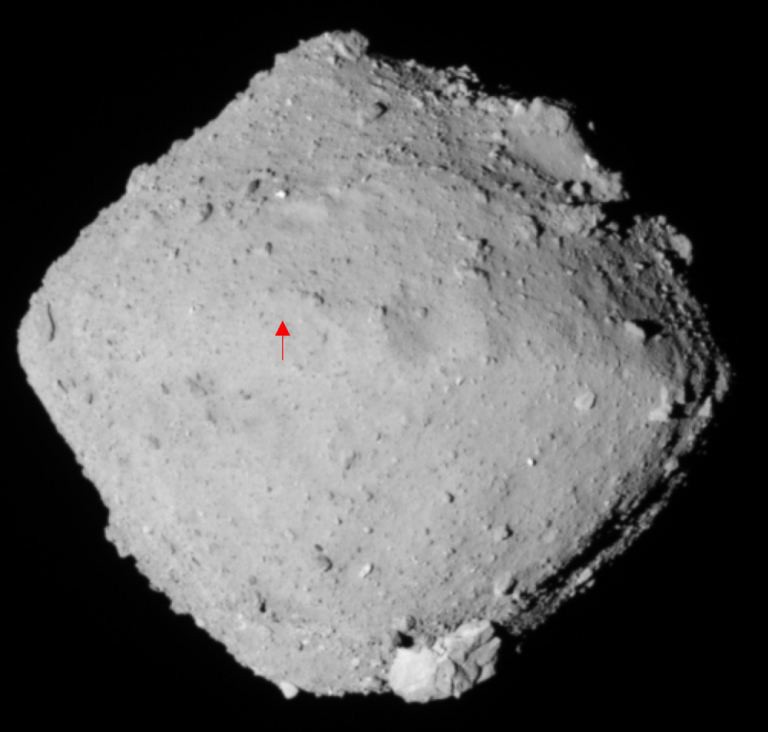
UNIVERSE TODAY
Tests From Asteroid Ryugu Contain Bits That Came From Outside the Solar System,

Some time before our Sun started to frame, stars were kicking the bucket in our piece of the world. One of them detonated as a cosmic explosion. The calamity made minute grains of residue and the power of the blast shot through a close by haze of gas and residue. That activity cultivated the cloud with "outsider" materials from the dead star. The shock wave from the cosmic explosion additionally made the cloud breakdown in on itself to make the Sun. The "extras" of the cloud turned into the planets, moons, rings, comets, and space rocks of our planetary group.
Space rock 162173 Ryugu contains grains of that old material from the a distant memory star. The Japanese Hayabusa2 mission investigated Ryugu and returned tests of those residue grains for researchers to break down. They give hints about that star and what conditions resembled before the Sun was conceived.
Old stardust isn't a shock to cosmologists. It exists in crude extraterrestrial grains. Through synthetic examination, space experts can sort out when they framed as a star matured and passed on. The vast majority of them are oxygen-rich silicates or oxides or carbon-advanced grains. The silicates are fairly intriguing. That is on the grounds that compound enduring or different cycles on a space rock (or on Earth) obliterate them. Thus, in the event that they're found by any stretch of the imagination, they're for the most part in a shielded piece of a space rock.
Carnegie researchers Jens Barosch and Larry Nittler worked with the Hayabusa2 Initial Analysis Team to decide the compound cosmetics of the grains. They distributed their outcomes in a new paper in Nature Letters. It portrays the residue grains and what they mean for how we might interpret pre-nearby planet group occasions. Basically, the group did a progression of microanalytical tests on the Hayabusa2 tests. Then they contrasted the outcomes and comparable tests done on carbonaceous chondrites (crude shooting stars) tracked down here on Earth.
Space rock Samples Provide Clues to Ancient History
The group recognized examples of "pre-sun based grains" in the Ryugu materials, including carbonaceous grains. There was likewise a shock. Pieces of the examples were delicate silicate material, which give some insight to their arrangement and to conditions they encountered on the space rock.

On the left is an optional electron picture of a Ryugu molecule squeezed into gold foil in which two silicon carbide presolar grains were recognized, as demonstrated by white bolts on the middle and left pictures. Graciousness Jens Barosch.
"Various sorts of presolar grains started from various kinds of stars and heavenly cycles, which we can recognize from their isotopic marks," Barosch made sense of. (Isotopes are forms of components with similar number of protons, yet an alternate number of neutrons. Their presence in the residue tests give hints about when they framed and heavenly action happening at that point.) "The valuable chance to distinguish and concentrate on these grains in the lab can assist us with grasping the astrophysical peculiarities that formed our Solar System, as well as other grandiose articles."
Researchers sort presolar grains into bunches that interface them to the kinds of stars that made them. Many grains with oxygen isotopes probably framed in the breezes of asymptotic goliath branch (AGB) stars with various masses and additionally metallicities. They could likewise frame in supernovae. Silicate grains come from different sources: AGB stars ejecta of novae or supernovae. Presolar graphite grains most likely come from AGB stars and supernovae.

Imaginative impression of a star going cosmic explosion, projecting its synthetically improved contents into the universe. An occasion like this makes dust grains as well as spreads through adjacent space, where they can get cleared up in star and planet arrangement processes. Credit: NASA/Swift/Skyworks Digital/Dana Berry
"The sytheses and overflows of the presolar grains we found in the Ryugu tests like we've recently tracked down in carbonaceous chondrites," made sense of Nittler. "This provides us with a more complete image of our nearby planet group's developmental cycles that can illuminate models and future trials on Hayabusa2 tests, as well as different shooting stars."
Follow Discover universe to stay updated on their latest posts!
